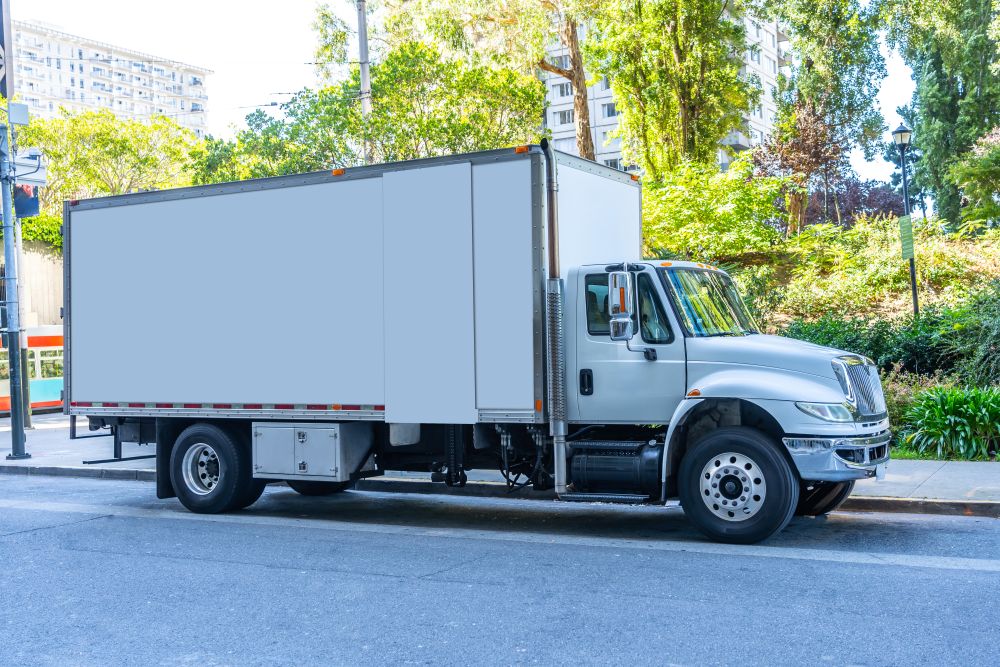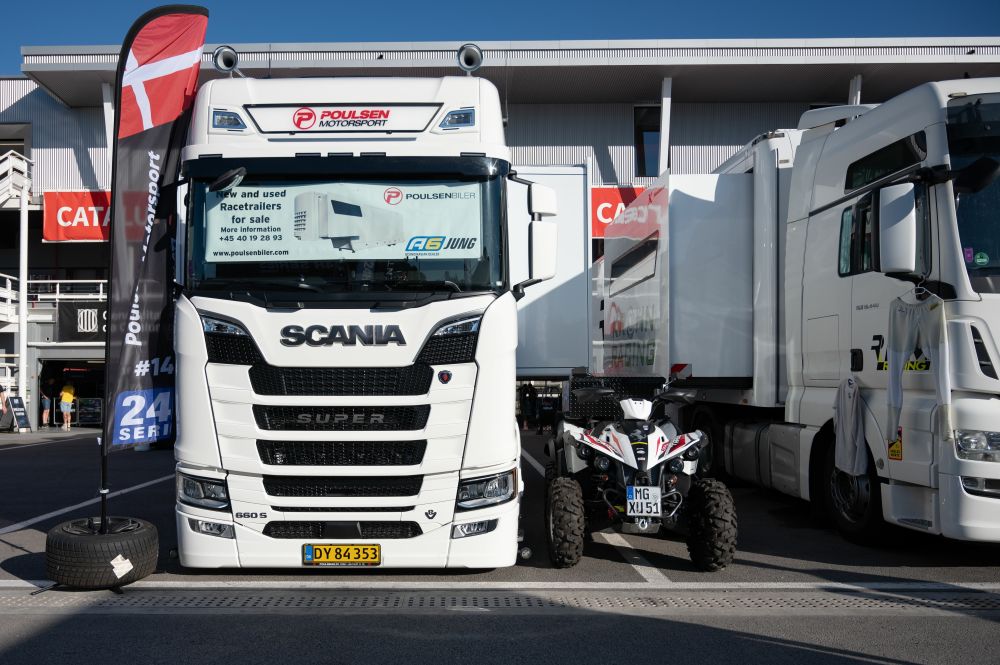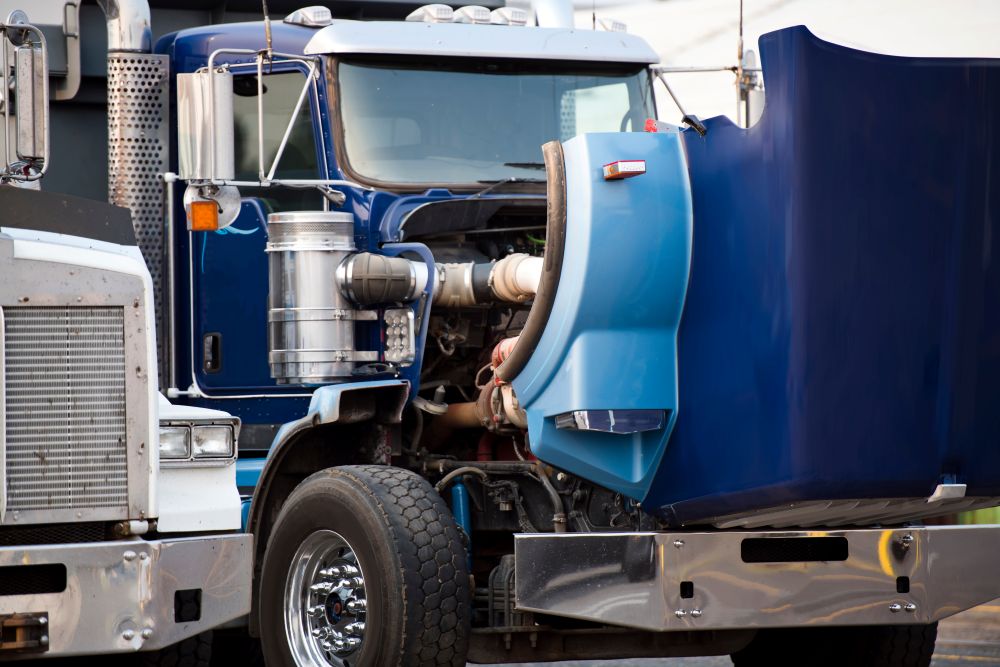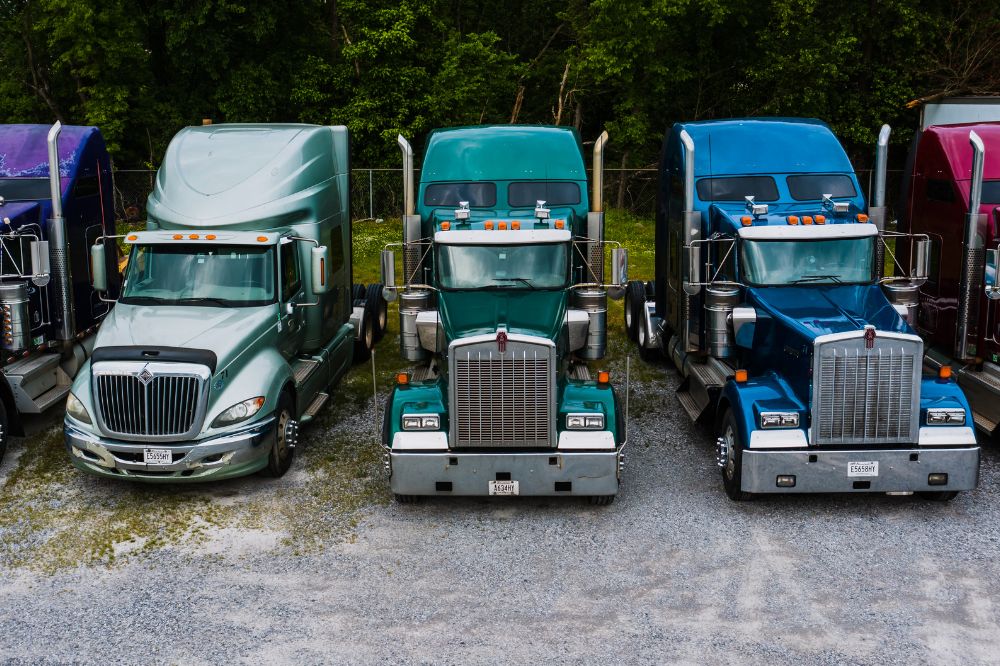
The commercial trucking industry is fiercely competitive—survival isn’t just about selling trucks, it’s about standing out. For smaller dealerships, grabbing the attention of owner-operators, fleet managers, and logistics companies can feel like an uphill battle, especially without a massive budget.
The good news? You don’t need billboards or expensive ads to make an impact. With buyer habits shifting online, digital marketing is the most powerful way to grow your dealership.
Winning in today’s market means taking a digital-first approach—boosting your online presence, engaging customers where they already are, and using data to make smarter decisions.
Not sure where to begin? Here are the top marketing strategies to expand your reach, turn leads into buyers, and build long-term success.
A Traditional Marketing Strategy Is No Longer Enough
To grow your trucking company, you need effective marketing strategies. Traditional marketing, such as print advertisements, radio spots, billboards, and trade shows, is no longer enough to drive sales to your commercial truck dealership.
While the above methods still have their place in dealership marketing, they are not effective enough. You need to supplement your traditional marketing strategy with modern digital dealership marketing solutions.
Traditional advertising methods like print ads and billboards may generate broad exposure but lack precision targeting. You end up paying for visibility among audiences who may have no interest in purchasing a commercial truck.
In contrast, digital marketing enables precise targeting based on demographics, location, search behavior, and past interactions—ensuring your marketing dollars are spent more efficiently.
It is also difficult to track return on investment (ROI) with traditional marketing methods. Determining how many leads or sales come from a billboard or magazine ad is, at best, a guess. Digital marketing offers detailed analytics for every campaign. This allows you to measure performance effectively, optimize spending, and maximize returns.
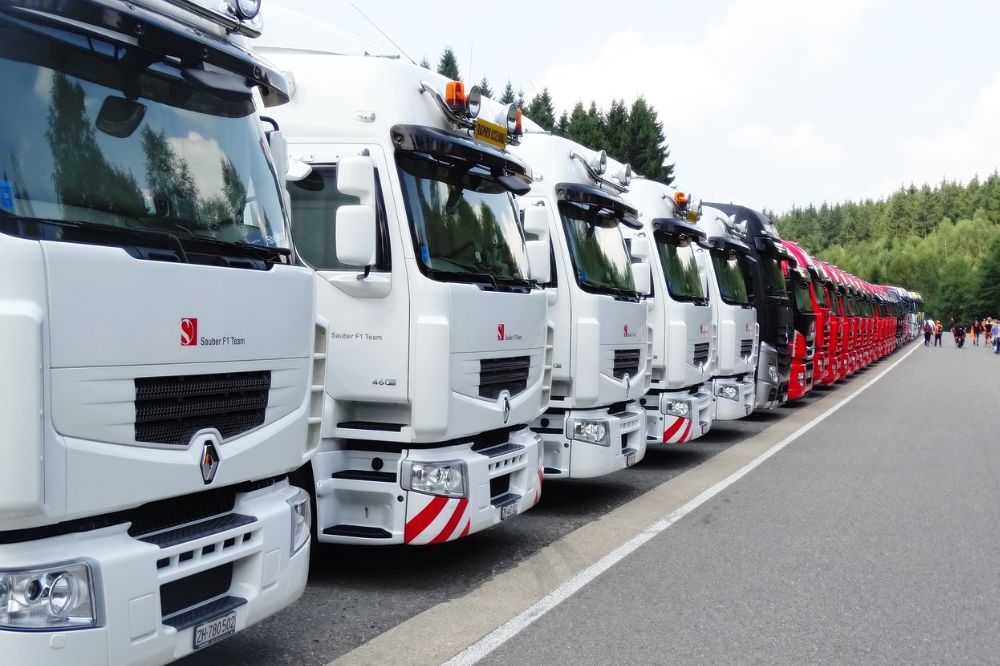
Consumer behavior and the trucking industry in 2025 have also shifted dramatically.
Commercial truck buyers expect to find detailed product information, reviews, and financing options online before visiting a dealership. Buyers are spending more time researching, comparing prices, and consulting multiple sources before committing to a vendor.
Without a strong digital presence, your commercial truck dealership risks losing potential buyers to competitors who offer this information more readily online.
The Multi-Channel, Digital-First Marketing Approach
Multi-channel dealership marketing is increasingly important in the commercial automotive industry. Using old and new methods, you can increase your commercial vehicle sales and create a revolutionary omnichannel marketing strategy.
But how exactly does a multi-channel, digital-first approach help your auto dealership marketing plan?
Digital Marketing Expands Reach and Engagement
A well-optimized website and active social media presence help potential buyers find your inventory online. Video marketing, live chats, and interactive content keep audiences three times more engaged than traditional marketing—bringing you more quality leads and potential customers.
- Precision Targeting with Data-Driven Marketing: Pay-per-click (PPC) ads target high-intent buyers. These ads appear to customers based on their search behavior, location, and previous interactions with your website. For example, if a fleet manager visits your website but doesn’t convert, digital marketing ensures they continue seeing your inventory and promotions wherever they’re browsing online.
- Omnichannel Customer Experience: Buyers expect a seamless dealership marketing experience, no matter the platform. If a customer sees an ad on Facebook, visits the website, and later contacts your dealership via live chat, the experience should feel cohesive. Email marketing, SMS updates, and AI chatbots to create a cohesive omnichannel experience help you cover all bases, ensuring that no lead falls through the cracks.
- Cost-Effectiveness and High ROI: Unlike traditional ads, which stop delivering results once the budget runs out, SEO and content marketing generate leads organically over time. These provide a direct, low-cost method of nurturing leads and turning satisfied customers into repeat business.

Understanding Your Audience
Understanding your audience is the first step to any digital dealership marketing strategy. You must understand your key customer segments: owner-operators, fleet managers, and logistics companies.
Each group has distinct needs and decision-making processes that influence the type of marketing that will affect them.
For example, owner-operators are often self-employed truck drivers who prioritize financing options, vehicle reliability, and long-term maintenance costs. Fleet managers oversee multiple trucks and focus on cost-effective, scalable solutions that reduce operational expenses.
Conversely, logistics companies require efficient fleet expansion strategies to keep up with increasing demand. Stay on top of industry news and social media to see what specific customer segments want when shopping for commercial trucks.
Price sensitivity, vehicle specifications, and purchase timing also drastically affect buying behavior. Many buyers operate on tight margins and look for financing solutions and more cost-effective dealership options.
Buyers must consider fuel efficiency, engine performance, and warranty coverage to maximize their ROI. Demand also fluctuates depending on the season, with sales peaking right before major freight season in July.
The above generalization will help you refine your marketing strategy. But you’ll need more data to gain valuable insights, especially on your existing customers. Outline the ideal customer persona based on existing customer wins.
Use CRM software to track customer interactions and preferences, and Google Analytics for insights into website traffic and engagement patterns. AI-driven tools are also great at predicting purchasing trends. Use this data to tailor your dealership marketing campaigns’ messaging and promotions.

Building a Strong Online Presence
A strong online presence is necessary to establish credibility.
It puts potential buyers at ease and provides access to information about your dealership. A dealership website, social media profiles, and online directories are all part of a cohesive brand image. This consistency in your branding, messaging, and contact details helps strengthen trust in your brand, improves search rankings, and is a key marker of exceptional customer service.
But how do you create a powerful online presence from scratch?
The Power of a Professional Website
Your website is your digital storefront and is crucial to lead generation. If you want to build a strong online presence visitors to your page must have a good experience when they land on your website. Fast load speeds, mobile responsiveness, and intuitive navigation are essential.
Studies show that 53% of visitors leave a website if it takes more than three seconds to load. Considering over 70% of truck buyers research vehicles on mobile devices, a mobile-friendly design is essential for capturing leads.
Implementing Search Engine Optimization (SEO)
Search engine optimization (SEO) also significantly enhances a website’s visibility. Use high-quality images and keyword-rich descriptions, and create informative blog posts to improve your search rankings. Look at Google’s SEO guide to get up to date on SEO best practices.
Local SEO is particularly important as most customers search for dealerships in their area. Incorporate location-based keywords such as “commercial truck dealership near me” and optimize your Google My Business listing. Update your data, regularly reply to reviews and post photos, and fill out all the available business information fields.
A content marketing strategy is also crucial for making the most of your online presence. Create content, like blog posts, covering industry trends, truck maintenance tips, and financing options to establish your dealerships as an authority in the field.

While some dealerships may choose to handle SEO and content marketing in-house, it may be worth employing a specialized agency to develop and execute a comprehensive strategy. An experienced agency can help optimize your website, create high-quality content, and implement SEO tactics that drive consistent traffic and leads.
This way, you attract potential buyers and improve customer satisfaction with a more transparent and reliable business presence.
Using Social Media Marketing
Social media is an engaging way to connect with potential customers, showcase inventory, and foster customer loyalty.
Popular platforms like Facebook and LinkedIn are ideal for B2B networking and building industry connections. Instagram and YouTube are great for visual storytelling, such as sharing truck walkthroughs and customer testimonials.
Engaging content, such as behind-the-scenes dealership tours, financing tips, and industry insights, is excellent for building a genuine and transparent connection. Limited-time promotions, interactive polls, and customer success stories further enhance engagement and brand recognition.
You also have the option to use paid social media advertising, which we cover in more detail in the next section. These tools allow you to target specific demographics, regions, and online behaviors.
The Power of Video Marketing
Video content significantly boosts engagement and conversion rates and can be a valuable component of any successful dealership marketing strategy.
Use truck walkaround videos to highlight vehicle features and specifications and give buyers a detailed look at your dealership’s inventory. Sharing customer success stories is also a great way to attract more loyal customers and build trust as an industry professional.
Lastly, use video marketing to create interactive content that strengthens customer relationships, such as live video sessions or Q&A segments with your best sales representatives.

Paid Advertising Strategies
While paid advertising isn’t a must, it should be a serious consideration. Paid advertising strategies, including Pay-Per-Click (PPC) campaigns, significantly enhance lead generation and online visibility.
Pay-Per-Click (PPC) Advertising
Most PPC is also relatively cost-effective, especially on social media platforms like Facebook and Instagram. However, make sure you use the right PPC services for the right ad campaign. For example, Google Ads help capture high-intent searches—ensuring your dealership appears at the top of search results for key queries like “buy used semi-trucks.”
Social media advertising is effective for increasing brand awareness and engagement. Social media lets you target specific demographics and offers flexible payment options to suit your budget.
No matter the PPC campaigns, ongoing A/B testing, strategic keyword research, and budget allocation based on performance metrics are a must. That way, you can retarget previous campaigns, attract customers who were on the fence, and optimize your marketing strategy to make the most of it.
SMS Marketing
SMS marketing connects with your audience through text messages sent to their mobile phones. It’s a fast, personal, and effective way to share updates, offers, and important information.
Use personalized text messages to share promotions, financing options, maintenance services, and new inventory arrivals.
To maximize the effectiveness of your SMS dealership marketing campaign, keep messages concise, relevant, and timely. Sending follow-ups after inquiries and appointment reminders can also enhance customer engagement.
The Role of Email Marketing
Email marketing is one of the most cost-effective strategies for nurturing leads and maintaining long-term customer relationships.
With automated email, your dealership can follow up on inquiries and reconnect with potential buyers via direct mail. Monthly newsletters featuring new inventory, industry updates, and exclusive offers are also great for increasing clicks and conversion to your website.
However, personalization is key. Creating customer segments based on customer preferences, past purchases, and browsing history. That way, customers only receive information relevant to them.

Establishing Trust and Credibility
No matter what marketing strategies you use in today’s digital age, trust is the foundation of long-term success in the truck dealership industry. The best way to build credibility is by consistently delivering excellent service and encouraging satisfied customers to share their experiences online.
Ask previous customers to leave reviews on Google, social media, and industry forums to boost your dealership’s reputation. Featuring testimonials on your website’s homepage also gives potential buyers real, firsthand insights into your customer experience.
Engage with all reviews—both positive and negative. Respond professionally, address concerns honestly, and offer real solutions. Being transparent and proactive not only strengthens trust but also reinforces your dealership’s commitment to quality service.
Adopt a Holistic Marketing Approach
The most successful dealership marketing strategy uses digital and traditional marketing methods.
Attend trucking expos and trade shows to create networking opportunities and strengthen your brand presence. Your dealership can also collaborate with industry influencers, such as popular trucking YouTubers and bloggers, to expand your reach and enhance credibility.
As your budget and presence grow, you can focus more of your budget on more traditional (and more expensive) marketing, such as billboards, TV, and print ads.
Conclusion
In today’s digital world, a one-size-fits-all approach won’t cut it—your dealership needs a smart, multi-channel marketing strategy to stay ahead.
By combining data-driven insights, SEO, social media, and customer-focused strategies, you can attract more buyers, build strong relationships, and keep your competitive edge.
Looking to enhance your dealership’s marketing strategy? Explore financing solutions and industry insights with Mission Financial Services to boost your business growth!















